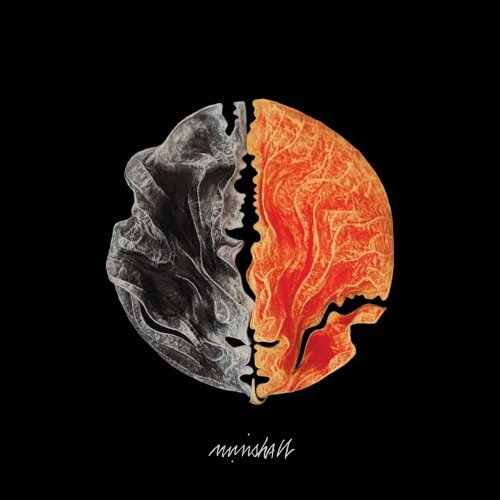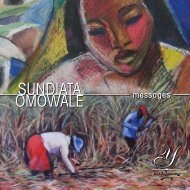Minshall-Miscellany - Y Art Gallery
Minshall-Miscellany - Y Art Gallery
Minshall-Miscellany - Y Art Gallery
You also want an ePaper? Increase the reach of your titles
YUMPU automatically turns print PDFs into web optimized ePapers that Google loves.
Redwing, Acrylic on board, 12” x 12”, ©1980
In 1966 the Carnival supplement of the<br />
Trinidad Daily Mirror featured on its cover a<br />
photograph of the head of a man playing a<br />
mas. Shaven clean, the head was painted all<br />
over with a mosaic of colours, a stained-glass<br />
window of a head, mask-like and serene.<br />
Peter <strong>Minshall</strong> became fascinated with this<br />
image, and saved copies of the newspaper<br />
for his portfolio of art references. He was<br />
then twenty-five, about to finish his studies in<br />
theatre design at the Central School of <strong>Art</strong> and<br />
Design in London. Around the same time, he<br />
was designing queen costumes and gowns for<br />
Trinidad Jaycees Carnival Queens, fully faithful<br />
to the island bourgeois sentiments of glamour<br />
and cosquelle beauty. Not long after, upon<br />
graduating from the Central, he began working<br />
as a designer for the professional theatre, and<br />
within three years his designs were featured in<br />
a heralded premiere at Sadler’s Wells Theatre<br />
in London of the full-length ballet, Beauty and<br />
the Beast. Meanwhile, betwixt and between<br />
the professional theatre work and the periodic<br />
returns to the Trinidad Carnival, <strong>Minshall</strong> pulled<br />
from his portfolio of references the head of the<br />
carnival man and began to deploy it in graphic<br />
design projects, and in easel paintings, as a sort<br />
of surreal mystical Everyman. Within another<br />
few years he had experienced, onstage at the<br />
Queen’s Park Savannah, the breakthrough in<br />
kinetic expression that manifested in his mas<br />
From the Land of the Hummingbird. Clearly,<br />
this was an artist not limited to a single art form<br />
or means of creative expression.<br />
<strong>Minshall</strong> is best known as an artist of the<br />
mas. It is an identification with which he is<br />
both comfortable and proud, but it should<br />
not be misunderstood as a narrow focus<br />
or a limitation. Most essentially, <strong>Minshall</strong> is a<br />
contemporary artist. As the artist evolved,<br />
he was drawn to the mas, fundamentally,<br />
because he believed it held the greatest<br />
possibilities for making contemporary art. His<br />
body of work in the carnival has borne out that<br />
conviction.<br />
Given the artist’s background, training,<br />
talent, and ambition, it is not surprising that his<br />
design work for the mas displays sophisticated<br />
draughtsmanship and artistry. The work of<br />
creating mas involves drawing, sketching,<br />
collage and construction in the making of<br />
visual patterns and forms, and these are often<br />
as valid and viable on the gallery wall as they<br />
are on the streets during the carnival.<br />
At the same time, it is equally unsurprising<br />
that the contemporary artist continued, over<br />
the years, to create work across numerous<br />
other art forms and various media. The works<br />
Black Narcissus<br />
Design for Jaycees Carnival Queen evening gown,<br />
Trinidad Carnival 1967<br />
Crayon, acrylic and lace collage on card<br />
20” x 25”<br />
©1966<br />
2 I MINSHALL MISCELLANY MINSHALL MISCELLANY I 3
The Bird in the Gilded Cage<br />
Design for Jaycee’s Carnival Queen costume<br />
Acrylic on paper<br />
12.75” x 19.5”<br />
in this exhibition, MINSHALL MISCELLANY,<br />
provide a rich sampling of that variety.<br />
The range is wide, but the works are<br />
not disparate. There is a complex web of<br />
interrelatedness. To borrow from the theme<br />
of his 1997 mas, each piece is a thread of the<br />
overall Tapestry of the <strong>Minshall</strong> body of work.<br />
Recurrent themes reveal themselves<br />
across the many media and art forms: duality,<br />
life and death, good and evil, humankind’s<br />
glorious perfection and man’s inhumanity to<br />
man. The quintessence of celebration and<br />
the mad dance on the brink of oblivion. The<br />
dramatic arc of the carnival, beginning with the<br />
birth of jouvay, rising out of the earth, to the<br />
fully-fledged glory of Carnival Tuesday, waning<br />
to the lengthening shadows of las’ lap.<br />
The theatre designs have the vitality<br />
of the mas. Sculpture is in the form of the<br />
transformative masque. A mural dances like a<br />
mas in the breeze. Painting and collage deploy<br />
the meticulous intricacy of headpiece and<br />
breastplate. The mas is theatre of the street.<br />
And from the surface of drawing and painting,<br />
collage and maquette, we are caught in the<br />
sidelong gaze of that serene and surreal man<br />
of the carnival, our Callaloo, our Everyman.<br />
– Todd Gulick, (11 Oct 2012)<br />
4 I MINSHALL MISCELLANY MINSHALL MISCELLANY I 5
Man Better Man: Potagee Joe’s Rumshop<br />
Theatre set design<br />
Dartmouth College, Hanover, New Hampshire, USA<br />
Cut out card, tape and glue<br />
11” x 21.5”<br />
©1976<br />
Beauty and the Beast, Act II: Servant Girl 1<br />
Costume design for ballet<br />
Scottish Ballet, Sadler’s Wells Theatre, London<br />
Acrylic on paper<br />
9.5” x 20”<br />
©1969<br />
Beauty and the Beast: Bavolet, Beauty’s father<br />
Costume design for ballet<br />
Scottish Ballet, Sadler’s Wells Theatre, London<br />
Acrylic, metal wire on paper<br />
10” x 22”<br />
©1969<br />
6 I MINSHALL MISCELLANY MINSHALL MISCELLANY I 7
CALLALOO SAY... (Extracted from Callaloo and The Crab by Peter <strong>Minshall</strong>)<br />
Callaloo say that man have a spirit. How that<br />
spirit does come like a circle ‘round man<br />
head when it uncover...<br />
Every man have the power to put circle<br />
‘round he head and shine like the man in the<br />
moon. Every man have spirit. It only want to<br />
uncover. Is so Callaloo speak.<br />
And Callaloo say how man and beast and<br />
bird and fish and tree and everything on this<br />
little piece of Earth all pour from one cup...<br />
It only have one cup, Callaloo say. All things<br />
on this Earth, all pour from one cup. From<br />
that one cup all does drink.<br />
This little piece of Earth is the cup that man<br />
does drink from. Is with care man have to<br />
hold that cup. Is with life and love he have<br />
to fill it. Is circle that man have to put ‘round<br />
man head. Is love man have to love man an<br />
is lovse man have to love this little piece of<br />
Earth...<br />
Just as every man here seeing every man<br />
self in me, so I self seeing myself in every man<br />
here. Every man here is every other man<br />
here.<br />
I is everyman.<br />
You is everyman.<br />
All of we is one.<br />
Then Callaloo say how every man need love.<br />
And the circle must have room for every man.<br />
Nobody must leave out...<br />
Take heart, he say.<br />
Put heart in a circle, an put all the differences<br />
it have amongst man, down to the last little<br />
piece of difference, put all right there next to<br />
heart in that circle, and swizzle it up good,<br />
and then taste the sweetness of the callaloo<br />
of man.<br />
The differences is there to add delight, not to<br />
destroy and divide. The callaloo of man more<br />
sweet than the stew. Don’t let it stand up and<br />
spoil...<br />
Callaloo say to put away cutlass. Throw all<br />
the ammunition in the sea. And if is love man<br />
want, and good life man want to live, is hand<br />
have to hold on to hand, is circle have to<br />
make, is peace have to put in circle centre,<br />
and is prosperity then, and happiness for<br />
each and every man.<br />
Is so Callaloo finish talk.<br />
8 I MINSHALL MISCELLANY MINSHALL MISCELLANY I 9
A Rainbow for Everyman<br />
Ink stamp and acrylic on card, mounted on board<br />
62.75” x 12”<br />
©1986<br />
10 I MINSHALL MISCELLANY MINSHALL MISCELLANY I 11
The Coloured Man<br />
Crayon on paper<br />
12” x 12”<br />
Dry Leaves of Grass<br />
Acrylic and fern leaf on card<br />
14” x 20”<br />
©1986<br />
12 I MINSHALL MISCELLANY MINSHALL MISCELLANY I 13
Jouvay: The Rising Sun<br />
Design for mural<br />
Sagicor Building, Queen’s Park Savannah, Port of Spain<br />
Acrylic on paper, cut out and collaged<br />
10.75” x 26”<br />
©1991<br />
Jouvay: The Rising Sun is the design for<br />
a mural commissioned by Barbados Mutual<br />
insurance company, now Sagicor, for their<br />
Port of Spain headquarters on the western<br />
edge of the Queens Park Savannah. <strong>Minshall</strong><br />
approached the design for the mural the way<br />
he would approach the design for a king mas:<br />
start with the engineering and the structure,<br />
which then informs the design and the<br />
decoration.<br />
Combining references from the art form of<br />
mural design as well as from his own work in<br />
the mas, <strong>Minshall</strong> conceived a mural that would<br />
use a mosaic technique to display a detailed<br />
image, but a mosaic that would be light and<br />
alive, dancing like a mas, not cemented into<br />
place. Unlike ceramic tile mosaic, these “tiles”<br />
would be one-inch squares of translucent<br />
plastic (the coloured “gel” film used in theatrical<br />
lighting), dangling from plastic fasteners<br />
(“shot” on with fastener “guns,” used to fasten<br />
tags onto clothing). These tiles would hang<br />
from a grid of vertical tapes stretched taught<br />
the entire fifty-two foot height of the building’s<br />
atrium. (The related piece in this exhibition,<br />
Dancing Mosaic Hummingbird, is a mock-up<br />
of the construction technique for the mural.)<br />
To create the design artwork, <strong>Minshall</strong><br />
went through a painstaking process of<br />
creating his own range of coloured paper for<br />
collage. Since the image was to be executed<br />
inch by inch, in an array of individual “tiles,”<br />
he deployed a paint-splatter technique using<br />
stiff-bristled toothbrushes to create washes<br />
of colour comprised of tiny dots of paint, each<br />
dot to represent a mosaic square. From this<br />
stock of pointillist colours he meticulously cut<br />
out and collaged the three hummingbirds,<br />
bougainvillea, hibiscus, and foliage, each<br />
edged in gold, applied against a joyful palette<br />
of sunrise. With these techniques, the artist<br />
packed an extraordinary amount of precise<br />
detail into the 11” x 26” artwork. The completed<br />
mural, installed in the building’s atrium, features<br />
over 140,000 squares of coloured film, each<br />
corresponding to a tiny dot of paint in the<br />
original artwork.<br />
The mural remains in place today,<br />
remarkably as fresh as the day it was finished<br />
in early 1992. It faces the rising sun in the east.<br />
As air currents pass over the surface of the<br />
mural, the hanging mosaic tiles rustle gently,<br />
giving the mural image a continual shimmer<br />
and dance.<br />
Dancing Mosaic Hummingbird<br />
Study for mural design: “Jouvay: The Rising Sun”<br />
Polyester plastic film, plastic fasteners, cloth tape<br />
36” x 36”<br />
©1991<br />
14 I MINSHALL MISCELLANY MINSHALL MISCELLANY I 15
<strong>Minshall</strong> painted the collection of The Cloths of Tantana while at residence at the Yaddo artist’s<br />
retreat in upstate New York in 1993. These are artworks for gallery display, by which <strong>Minshall</strong><br />
converted so-called street art into so-called fine art. They are paintings in acrylic on paper that<br />
re-present graphic designs the artist had created in 1990 for the masband Tantana. For that<br />
mas, the designs were made into seven-foot squares of appliqued cloth and given to each<br />
masplayer as part of the mas costume. Following are excerpts from statements posted in the<br />
mascamp and in the newspapers to help convey to the masplayers and the public the essence<br />
of the mas.<br />
TANTANA<br />
TANTANA is Caribbean excitement.<br />
TANTANA is that particular West<br />
Indian joi de vivre – saucy,<br />
exuberant, spirited, sharp, witty,<br />
sweet, stylish, and sexy.<br />
TANTANA derives, probably, from the<br />
French “tant”, meaning “enough” or<br />
“so much”; “tant-tant” is<br />
“so much – so much”, or “much of a<br />
muchness”.<br />
TANTANA is a Caribbean flavour of<br />
excess – an excess of the human spirit.<br />
TANTANA is the synthesis, the hybrid.<br />
It is not European, nor African,<br />
nor Indian, nor Syrian, nor Chinese,<br />
nor anything else but CARIBBEAN.<br />
TANTANA gives each masplayer a piece<br />
of cloth,<br />
a seven-foot square of tailored, appliquéd,<br />
contemporary design.<br />
Each square of cloth is a work of art in itself.<br />
The masplayer plays the square of cloth.<br />
It is the flag without the flagpole.<br />
It is the wing without the cane.<br />
It is the cape, the skirt, before they are<br />
tailored.<br />
It can be a billowing banner overhead, or a<br />
wall of colour.<br />
TANTANA is an expression of faith<br />
in the creative spirit of each individual<br />
masplayer.<br />
The mas is what you make it.<br />
The Cloths of Tantana: Fyzabad<br />
Acrylic on paper<br />
24” x 24”<br />
©1993<br />
The Cloths of Tantana: Black Rock<br />
Acrylic on paper<br />
24” x 24”<br />
©1993<br />
16 I MINSHALL MISCELLANY MINSHALL MISCELLANY I 17
Head Piece<br />
Acrylic and crayon on card<br />
20” x 30”<br />
©1986<br />
Angel Astronaut<br />
Acrylic on transparent vacuum-moulded PVC plastic<br />
29” x 29” (on board)<br />
©1987<br />
18 I MINSHALL MISCELLANY MINSHALL MISCELLANY I 19
20 I MINSHALL MISCELLANY<br />
Face Off (the artist sober and the artist drunk)<br />
Crayon on Paper<br />
28” x 24”





